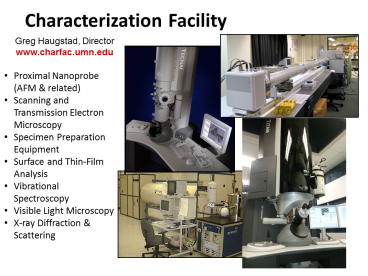What is IPRIME
IPRIME is a university/industry partnership at the University of Minnesota based on two-way knowledge transfer. The partnership is a consortium of companies supporting fundamental, collaborative research on materials with university members.

We have 61 faculty, and their graduate students, involved from 9 academic departments conducting research in 6 program areas. The breadth of these programs is quite large, spanning polymers, coatings, surfactants, electronic materials, nanomaterials, and biomaterials.
Participation in IPRIME affords companies the chance to scan a wide range of scientific and technological developments. IPRIME’s basic value statement is in providing our companies the chance to delve into the fundamental science that undergirds their products.
A principal goal of IPRIME is the engagement of industrial scientists and engineers in a pre-competitive, nonproprietary and collaborative environment. This structure promotes hands-on participation by visiting industrial scientists with IPRIME faculty, students and post-doctoral associates.

Industrial partners also benefit from equipment, staff and special-user rates in various supporting facilities including the Characterization Facility, Polymer Characterization Facility, University Imaging Centers, and X-Ray Computed Tomography Lab.
Recognizing that business conditions and policies continually change in the private sector, IPRIME is designed to be flexible and responsive in order to accommodate a spectrum of large and small companies, their involvement ranging from simply knowledge gathering to active “hands-on” participation by industrial scientists in collaborative research.
IPRIME expands the collaborative culture at the University of Minnesota to the industrial arena, strengthening research in both the academic and industrial sectors while promoting synergistic interactions that are pivotal in the training of the next generation of scientists and engineers.
IPRIME's History
IPRIME grew out of the legacy of the University of Minnesota’s Center for Interfacial Engineering (CIE).
CIE was a National Science Foundation (NSF) Engineering Research Center (ERC) founded in 1988 with support from the University of Minnesota, NSF, and member companies. CIE received the maximum 11 years of support from the NSF’s ERC program. In response to strong industrial interest at the end of the NSF funding period, IPRIME was created not only to maintain the collaborative research already underway, but also to extend the partnership to other programs including those supported by the Materials Research Science and Engineering Center (MRSEC) established in 1998 under a NSF grant.
CIE’s major legacies include:
Establishment of the Characterization Facility with the investment of over $7 million in research instrumentation.
The involvement of 860 students in CIE research and educational programs.
393 Ph.D. degrees and 59 Master’s degrees granted to CIE students.
The publication of over 1,400 papers in interfacial engineering by Center researchers.
The involvement of 114 Industrial Fellows from member companies in Center research.
The emphasis of 11 research areas in its five research program areas.
The production of six textbooks in the series “Advances in Interfacial Engineering,“which have sold well over 10,000 copies.
The development of the Multidisciplinary Engineering Curriculum Testbed (MECT) for creating computer-based instructional modules and materials in Interfacial Engineering, Fluid Mechanics, Heat Transfer, and Thermodynamics. (Visit WESEECO, Engineering Education Systems, for more information.)
Most significantly, CIE fostered a culture of integrated research, education, and industrial interaction that continues in IPRIME and MRSEC.
For further information
Contact Chris Ellison, Faculty Director
cellison@umn.edu